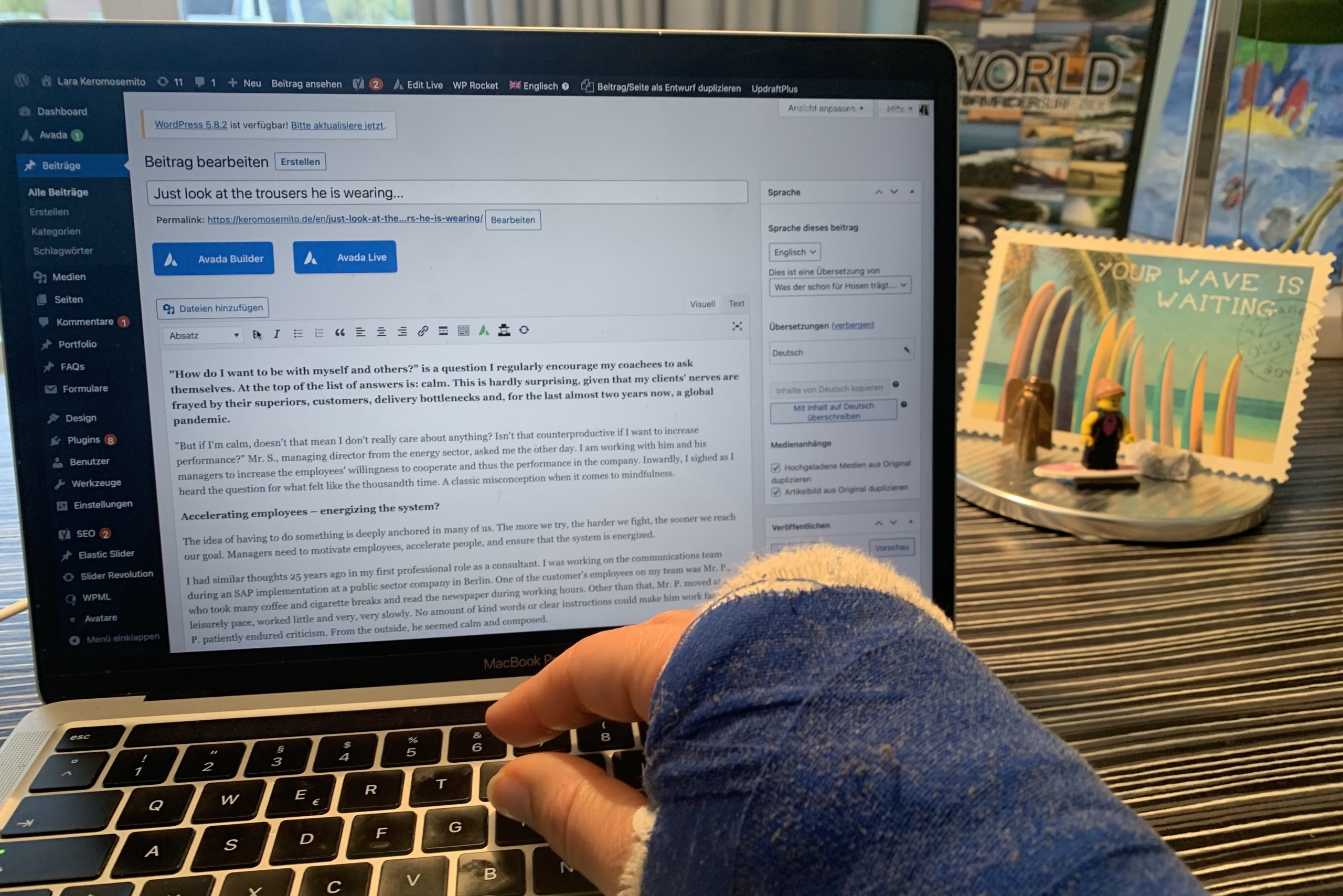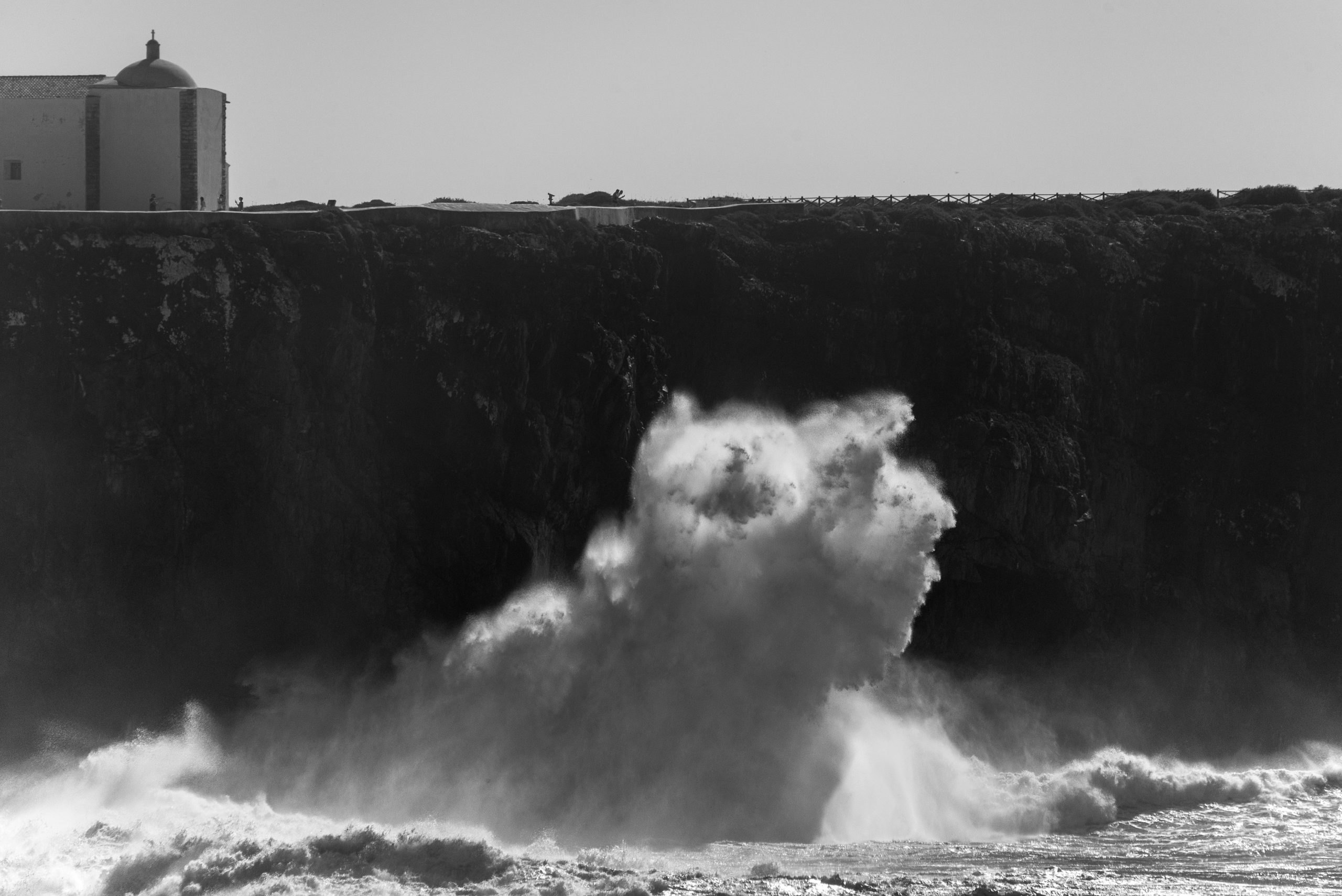“How do I want to be with myself and others?” is a question I regularly encourage my coachees to ask themselves. At the top of the list of answers is: calm. This is hardly surprising, given that my clients’ nerves are frayed by their superiors, customers, delivery bottlenecks and, for the last almost two years now, a global pandemic.
“But if I’m calm, doesn’t that mean I don’t really care about anything? Isn’t that counterproductive if I want to increase performance?” Mr. S., managing director from the energy sector, asked me the other day. I am working with him and his managers to increase the employees’ willingness to cooperate and thus the performance in the company. Inwardly, I sighed as I heard the question for what felt like the thousandth time. A classic misconception when it comes to mindfulness.
Accelerating employees – energizing the system?
The idea of having to do something is deeply anchored in many of us. The more we try, the harder we fight, the sooner we reach our goal. Managers need to motivate employees, accelerate people, and ensure that the system is energized.
I had similar thoughts 25 years ago in my first professional role as a consultant. I was working on the communications team during an SAP implementation at a public sector company in Berlin. One of the customer’s employees on my team was Mr. P., who took many coffee and cigarette breaks and read the newspaper during working hours. Other than that, Mr. P. moved at a leisurely pace, worked little and very, very slowly. No amount of kind words or clear instructions could make him work faster. Mr. P. patiently endured criticism. From the outside, he seemed calm and composed.
“I refuse to work myself to death!”
One day I asked him – “Don’t you think putting in a little more effort and getting good results will have a positive impact on your development in the company?”
Mr. P. – “Oh, Miss Consultant, would you like me to tell you how this works?”
“Sure!”
In his typically blunt Berlin accent, Mr. P. said – “Well, we’re getting paid according to the Federal Collective Agreement for Public Employees here. That means: the older you are and the longer you’ve been working here, the more you earn. So why should I work myself to death? I prefer to stay alive so I get to spend the big bucks I’ve earned.”
Bubbling under the surface
This was followed by a rant by Mr. P. lasting several minutes about how pointless the project was that he had been assigned to and that he had been demoted, and that it was outrageous how the company dealt with managers like him, etc. Whoa! I must have opened up a can of worms. Mr. P. was apparently carrying around a lot of anger that was weighing heavily on his mind. Beneath his surface, which many perceived as calm, things were bubbling violently.
Suppressing emotions – hard work
Today I know that many managers, even if they come across as calm on the outside, are fighting battles on the inside that take up most of their mental resources. They are very often busy suppressing their emotions in their day-to-day work. That is hard work and truly exhausting. Sometimes some of the bubbling energy leaks out in the form of sarcasm or outbursts of rage.
Energy guzzlers: inner struggles
In my coaching sessions, I analyze together with managers which battles they are fighting in silence, to some extent without even being aware of it. What states of mind do they find themselves in that rob them of the energy to do what needs to be done? These states cause meetings to be tough, decisions to be difficult, and people not saying and doing what is actually required. In a nutshell, nothing progresses. Performance drops.
Classics among these internal struggles are:
- Disappointment about not having been given a position
- Hurt over a demotion
- Being annoyed by others taking up a disproportionate amount of space (in meetings)
- Fear of having my head bitten off if I speak up
- Anger at being surrounded by idiots and having to do everything on my own
- Lack of understanding of decisions made by “them/him/her up there”
- Despair of not being heard
- Arrogance to know what is best for the company
- Irritation about how unprofessionally everyone works around here (except me)
- Worry about not meeting my own standards
- Exhaustion because it has been going on forever and never ends
Hard work that does not contribute to the goal
Since I also conduct one-on-one coaching sessions with Mr. S.’s team members, I know what is going on in the minds of these highly paid managers while Mr. S. is wondering how he can bring more energy into the system. But there is not a lack of energy in the system at all, on the contrary! The managers are doing hard mental work. However, this does not contribute to the desired goals, which demoralizes the team. Now I am in a bit of a bind because Mr. S.’s managers are telling me in confidence what is bothering them. “Just look at the trousers he is wearing!” – is one thing that is bugging one of his managers. Since confidentiality is the basic premise of my work, I can’t tell Mr. S. what his managers are thinking and feeling while they come across to him as passive or even calm.
Being calm is not the same as being indifferent
Therefore, I answer Mr. S.’s question in the following way – “Calmness does not mean: I don’t care about anything. That would be indifference. To be calm means: to perceive what is happening without automatically reacting. Being calm means not being on autopilot. It means not doing what you do just because you are skilled at it. Calmness means being able to make wise decisions. You can’t do that from a state of anger, fear, or rage. This response gave Mr. S. something to work with.
New space for new waves
In the last few weeks, I have been setting up a second coaching space in my office. It seemed like a wise decision to be able to welcome clients at my office even during the 4th, 5th, or 6th Coronavirus wave. This way I can switch rooms after each appointment and open the window in the other room for hours. I was thrilled with the idea of displaying photographs by Massimo Pardini, a photographer I admire greatly. Huge waves can be seen on them and the energy of the ocean is palpable. I asked various clients for their opinion about the photographs. Katja, one of the people who has since turned from a client into a friend, said she couldn’t imagine relaxing at the sight of the images. She felt as if “I’m crushed by the powerful force, the perceived whale of that wave sweeping me away.”
Wise use of energy
And that’s exactly why I chose these images. That is exactly what I want to convey in my coaching sessions: especially when things are turbulent – DO NOT panic, but remain calm and decide carefully, using your own energy wisely. It is not the event that defines me, but I define how I deal with the event.
- Do I want to face a challenge: yes or no?
- If yes, am I willing to consistently give it my all?
- Am I in the present moment and doing what needs to be done now?
- Or am I struggling with some old anger that I’ve been carrying around for a long time?
- Am I able to let go of unnecessary struggles?
- Do I know and accept my limits?
- Am I able to say “no” to a challenge, no matter what others expect or think of me?
- Am I able to wait for the storm to pass and then hit the waves?
No matter what’s going on out there, how do I want to be with myself and others? Especially in these turbulent times, “CALM” is a very wise response, don’t you think?
P.S. One week after writing this article I broke my wrist while ice-skating. With my long awaited X-mas surf being cancelled, being calm is a challenge and such a good exercise!
Photos Storm & Fortress by Massimo Pardini




